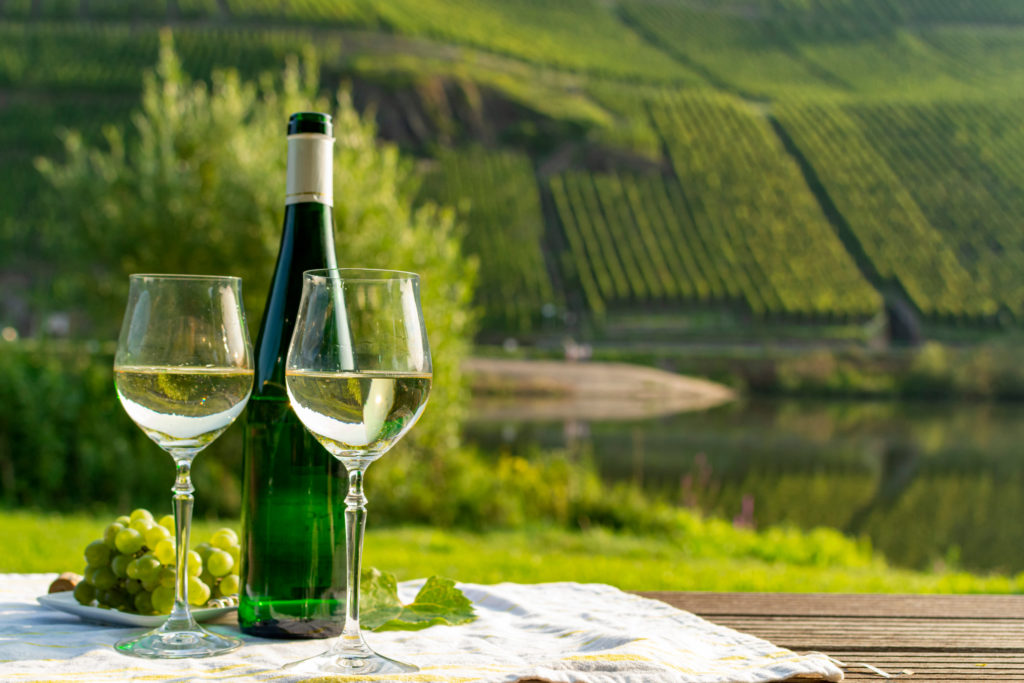When it comes to white wine, one name often sparks an intriguing debate among wine lovers and connoisseurs: Riesling. The question at the heart of many discussions is: “Is Riesling a sweet wine?” This query, while seemingly simple, uncovers a captivating journey into the diversity and versatility of the world-renowned Riesling grape. In this article, we will dive into the heart of this question, dissecting the nature of Riesling, its various styles, and its perceived sweetness in comparison to other well-known wines like Moscato. Whether you’re a wine lover or a casual enthusiast, join us as we explore the delightful complexity of Riesling sweet wine.
Understanding Riesling
Riesling is a white grape variety that originated in Germany’s Rhine region. It is an aromatic grape variety that displays a flowery, almost perfumed aroma, as well as high acidity. It’s popular in many parts of the world, notably Germany, the Alsace region of France, and even in cooler climates such as New York’s Finger Lakes and certain areas of Australia and New Zealand.
Is Riesling Sweet?
The sweetness of Riesling wines can vary significantly. This variation is a reflection of the Riesling grape’s adaptability to different climatic and geographical conditions, coupled with diverse winemaking practices.
Yes, there are sweet Rieslings. These are often late-harvest wines or specifically designated “sweet” styles. They showcase a beautiful balance of sugar and acidity, creating a luscious, sweet wine without losing the grape’s intrinsic vibrancy and freshness. Wines like these are capable of long aging and are often sought after by collectors.
On the other hand, Rieslings are also made in a range of dry styles. A dry Riesling will have very little residual sugar and not taste sweet. These wines tend to emphasize the vibrant acidity and minerality of the grape, often featuring citrus, green apple, and floral notes on the palate.
4 Types of Riesling Wine Based on Sweetness Levels
- Dry Riesling: Dry Riesling, also known as “Trocken” in Germany, contains very little residual sugar, less than 1% usually. These wines accentuate the vibrant acidity and mineral characteristics of the Riesling grape. They often exhibit notes of lime, green apple, and flint and pair well with a variety of foods, especially seafood and poultry.
- Off-Dry Riesling: Off-dry, or “Halbtrocken”/”Feinherb,” Rieslings have a hint of sweetness but are not overly sweet, usually containing 1-2% residual sugar. These wines are beautifully balanced, with the slight sweetness complementing the grape’s high acidity. Common flavors include peach, apricot, and citrus.
- Sweet Riesling: Sweet Rieslings, or “Spätlese” and “Auslese” in Germany, have a higher residual sugar content (often more than 4%). However, they maintain a lovely acidity that prevents them from becoming overly cloying. These wines are perfect dessert companions and pair well with spicy foods.
- Dessert Riesling: Rieslings in this category include the extremely sweet “Beerenauslese,” “Trockenbeerenauslese,” and “Eiswein” styles. With high sugar levels, these wines are luscious and rich, offering flavors of honey, tropical fruit, and apricot jam. They are exceptional with desserts and strong cheeses.
Each of these styles showcases the impressive versatility of the Riesling grape and its unique ability to maintain balance and freshness at every level of sweetness.
Is Riesling High in Sugar?
The sugar content in Riesling, like its sweetness, can vary greatly depending on the style of the wine. Rieslings can range from bone-dry (no residual sugar) to very sweet dessert wines, with the sugar content varying correspondingly.
It’s important to understand that the sugar content of a wine is a result of the winemaking process. During fermentation, yeast consumes the grape’s natural sugar and converts it into alcohol. The winemaker can stop this process early, leaving residual sugar in the wine, which contributes to a sweeter taste. Alternatively, they can let the fermentation process complete fully, which results in a dry wine with minimal residual sugar.
Therefore, when it comes to Riesling, it’s entirely possible to find wines high in sugar and others not. Some sweet or late-harvest Rieslings can contain significant amounts of residual sugar, making them higher in sugar content. On the other hand, many modern Rieslings, especially those from cooler climate regions, are made in a dry style, leaving little to no residual sugar in the final wine. Always check the label or ask your wine merchant for guidance if the sugar content concerns you.
How Sweet is Riesling Compared to Other Wines?
The answer for those who ask, “Is Riesling sweeter than Moscato?” depends on the specific wines in question. Both Riesling and Moscato (also known as Muscat) can be made in a range of styles, from dry to very sweet.
Moscato is often made in a sweeter style, particularly the sparkling Moscatos from Italy’s Asti region, which has gained widespread popularity for their light, frothy character and pronounced sweetness. Still, there are also dry Moscatos, which offer the grape’s typical floral and fruity character without the residual sugar.
In contrast, Riesling wines have a broader spectrum of sweetness levels. It is true that some of the most highly regarded Rieslings in the world, like those from Germany’s Mosel region, are often made in a sweeter style. Yet, many Rieslings, especially those from regions like Alsace and certain parts of Australia, are crafted to be dry or off-dry.
Riesling and Food Pairing
Whether a Riesling is sweet or not influences its food pairing capabilities. A sweet Riesling is a wonderful companion to spicy foods, particularly Asian cuisine, as the sweetness can help balance the heat. They also pair exceptionally well with strong cheeses and rich, fruity desserts.
On the other hand, Dry Rieslings are extremely versatile at the dining table. Their crisp acidity and clean, mineral-driven profile can pair with a wide range of foods, from seafood and poultry to pork and even veal.
The Magic of Riesling
What sets Riesling apart is its ability to maintain a high level of acidity even when made in a sweeter style. This makes even the sweetest Rieslings refreshing and prevents them from being cloyingly sweet. Furthermore, the grape’s natural aroma and flavor complexity mean that these wines offer many tasting experiences, from bright citrus and apple notes to more exotic stone fruit and even petrol nuances in aged Rieslings.
Conclusion
So, is Riesling a sweet wine? It can be, but it can also be dry or somewhere in between. Its versatility, aromatic intensity, and balance of acidity and sweetness make it a favorite among wine enthusiasts. Whether you prefer your Riesling dry or sweet, this wine’s appeal and incredible range of styles and flavors are not denied. The next time you reach for a bottle of Riesling, remember the diversity and depth of this remarkable grape variety.

